Crossroads
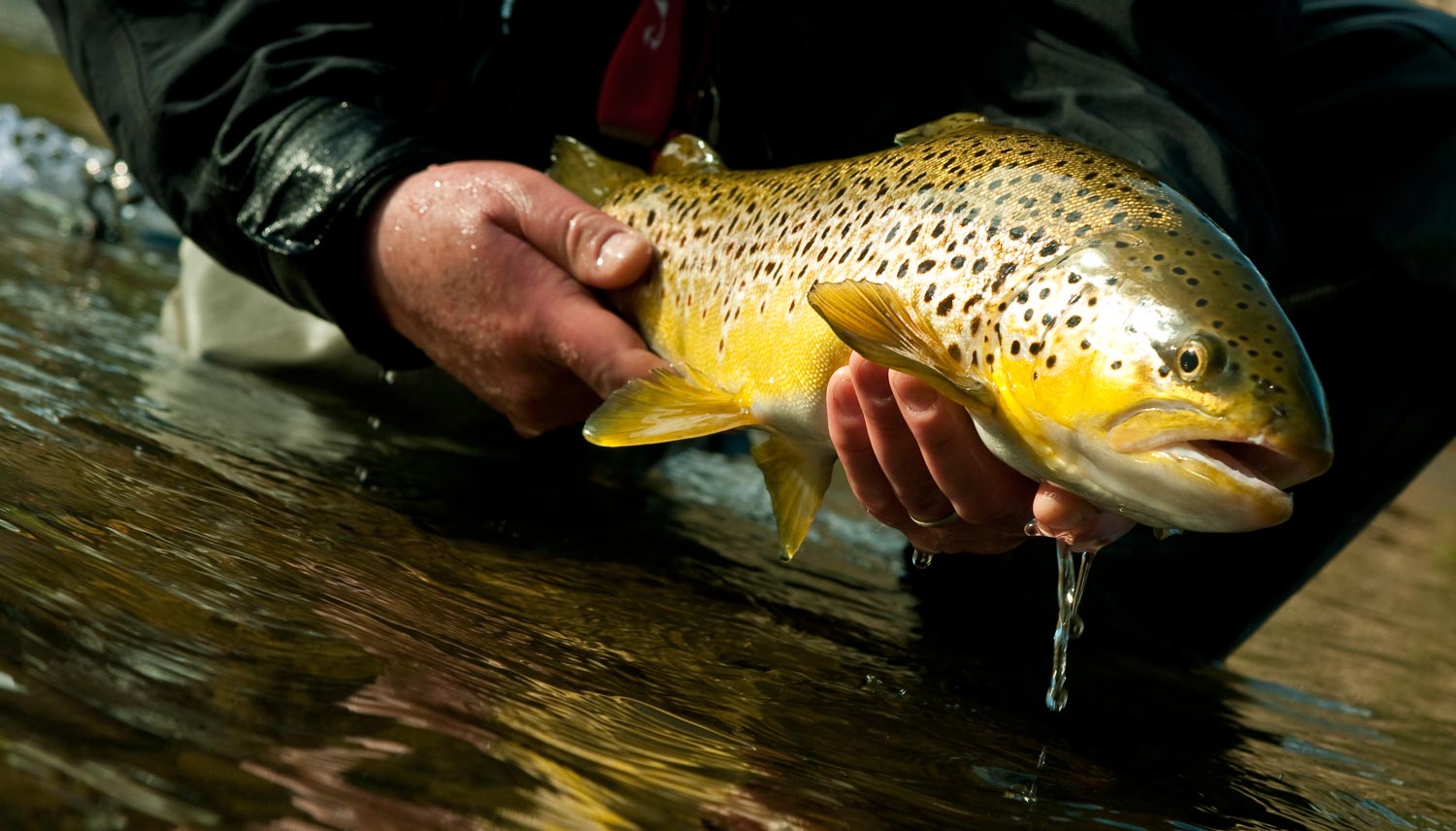
JUST A FEW DAYS AGO I FOUND MYSELF AT A CROSSROADS.
I had a day off from work and the usual “daddy duties,” which gave me the chance to get out and play a bit. Of course, being me, I decided to use that day to go fishing. No surprise there. After going over the short list in my head, I decided I would fish a rather popular trout stream in our area. I’m not a big fan of crowds or combat fishing, but the fact that this stream offers a steady stream of cold water, and lots of sight fishing, keeps me coming back.
Sometime after lunch that day, while approaching one of my favorite runs, I spot a large trout holding in the tail. Immediately, I get into to super ninja stealth mode and start planning my approach. It’s no doubt a big brown trout. I’ll have to double back and wade up to the run from below. Even then I’ll have to have my A-game with me. Doing anything otherwise would surely spook this wise, old trutta.
I was a little nervous as I stepped in downstream of the run. I swear it took me ten minutes to wade upstream all of twenty yards or so. Keeping a low profile, and staying quiet as possible, my only fear was that someone else would come along the trail and unknowingly spook this fish. Fortunate for me, this never happened though. And as I approached a large rock that I would use for cover, this big trout came into my view.
His back seemed thick as my thigh, and his length was impressive. Now I had caught some nice fish that day, but this big’un would surely be one of the largest I’d ever tangled with, dwarfing anything that I had brought to my net that day. This guy had certainly seen some flies float by in his day.
Scanning through my box, I pick out a couple of homemade flies, hoping that one of them will persuade him to eat. My rig is setup with a 5x leader tied to a #10 Turks with 6x tippet attaching a…. nymph of sorts. As I begin my first cast I know that I will only have a few shots before this trout will likely give me “the fin” and move on. There will be no false casting here, so I stripped line from my reel, letting the current take my flies from me. Once I had the right length of line out of the rod tip I executed a nice and easy water-haul to my target. The flies landed softly, beginning their drift down their intended path, and as they got to this trout’s discerning eye, he simply skated to the side and let them glide on by.
So here is where I came to this crossroads.
Read More »The Roll Cast Mend
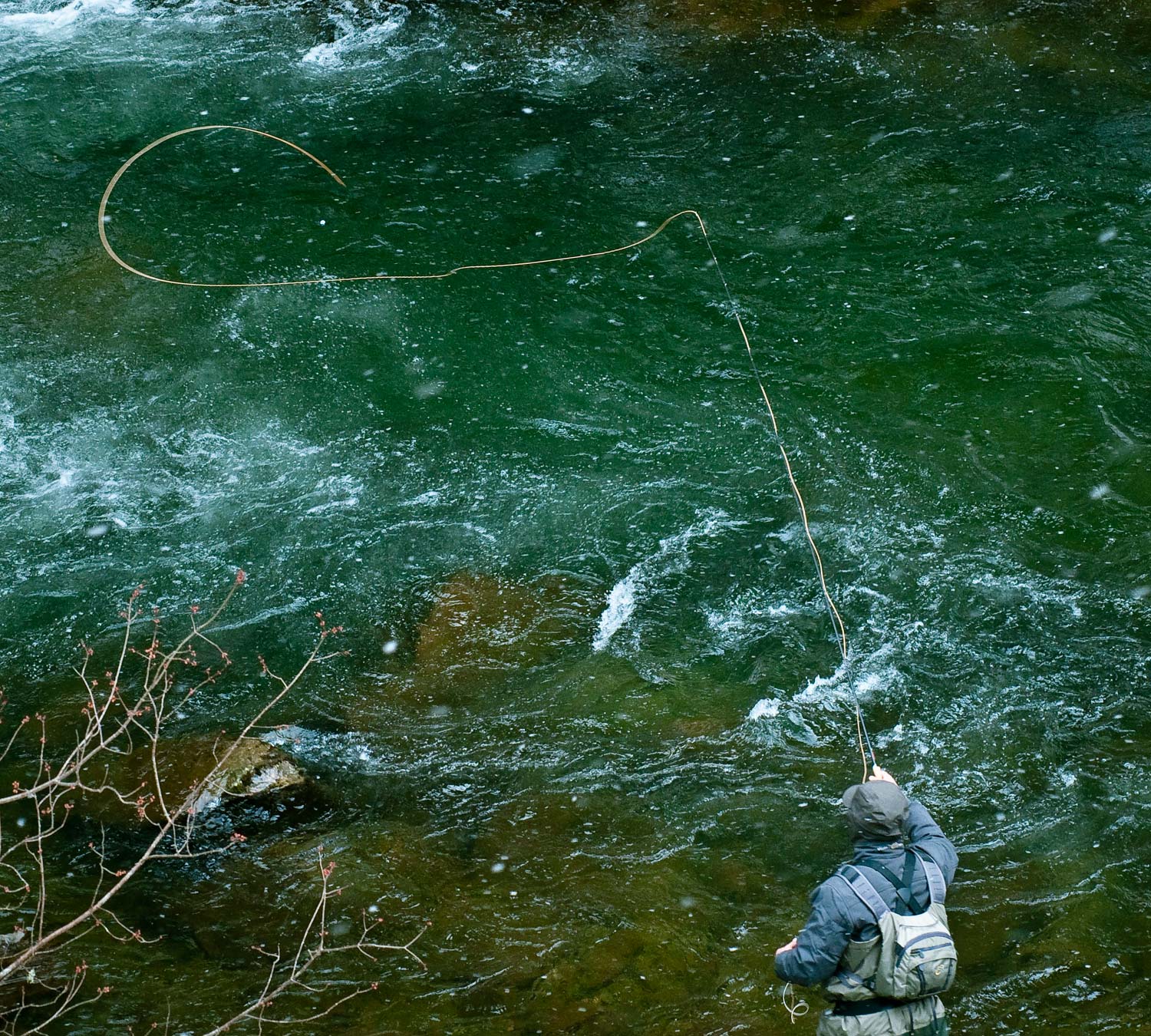
Do you ever find yourself on the water when a regular mend won’t provide you with a long enough drag free drift to catch trout? This usually occurs when you’re trying to get a drift across multiple currents on the far bank or when you’re trying to fish a soft seam, adjacent to faster water, that’s too far away from you to high-stick. In these two situations, a standard mend will usually not provide you with enough slack to keep your dry fly drifting naturally to the position of the rising trout or give your nymphs enough time to sink down into the strike zone.
When I find myself fly fishing in this situation,
Read More »The Best Way to Improve Your Trout Game
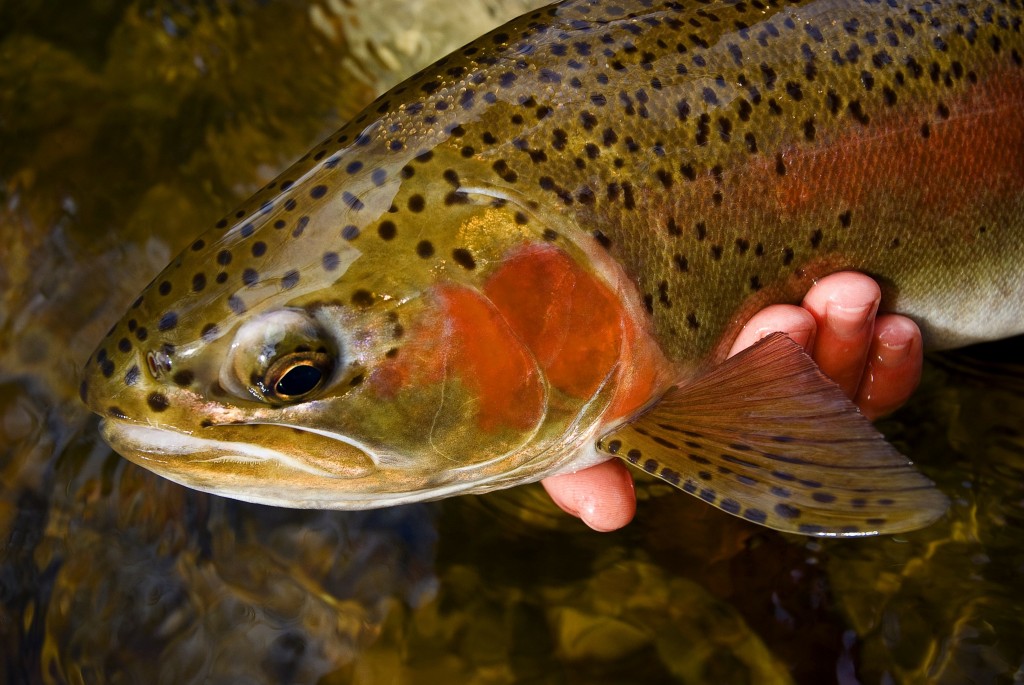
The single best way to improve your trout game is to fly fish on trout water that challenges you.
I’m talking about super technical water where trout are wary and extremely educated. The places where the smartest of trout live, where all you get is one or two shots to hit your target. These trout streams force you to maintain the highest level of discipline in your fly fishing. You have to think out every step of your approach and presentation to find success. If you fail at executing these strict requirements, you’ll almost certainly be skunked on the water.
It’s really easy for many of us with our busy schedules to focus our time fly fishing locations that allow us the most success, or should I say the easiest success. I’d be lying if I said I didn’t enjoy these easy trout streams myself, where I can immediately start catching fish within minutes of wetting my line. Just remember, if all you do is fish easy trout water, you’re going to have a rude awakening when you finally get around to stepping foot on a truly technical trout stream. You won’t find success, your confidence will shrivel, your pride will take a beating and you’ll probably feel like crawling off into a hole when it all said and done. Not only that, but you’ll also be impeding the improvement of your fly fishing skills in the process, and you’ll be no different than a kid refusing to take off the training wheels on his/her bike because it’s easier and safer.
So change up your routine, step away from your comfort zone and the rookie trout water for a while. Next time you go fly fishing
Read More »Summer is Coming
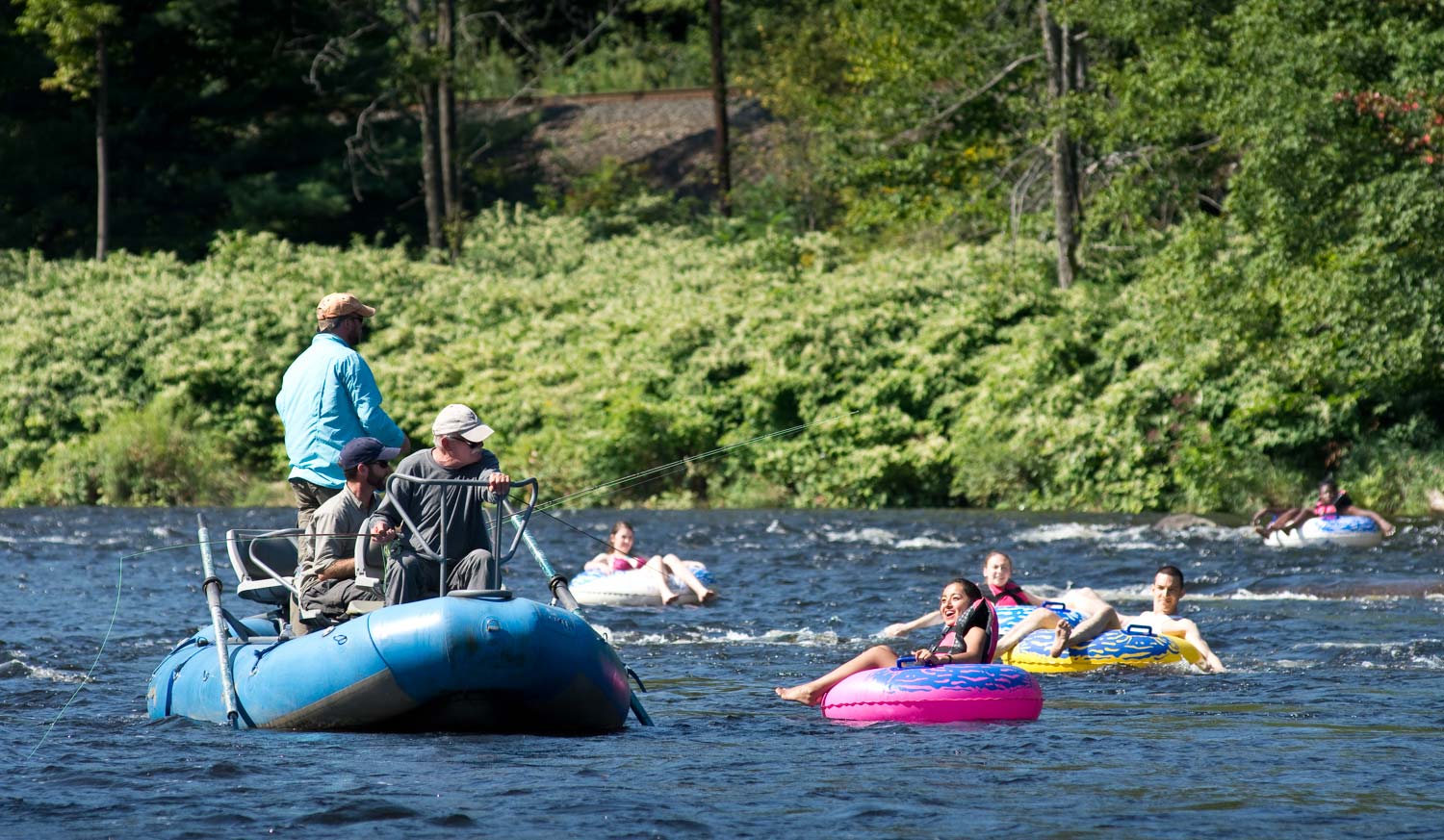
Summer, and the tube hatch, are just around the corner.
Here in the south we view summer in much the same way the my northern friends view winter. There’s plenty of fun outdoor stuff for us to do but it’s also a long miserable slog. It’s also a time many of us dial back our trout fishing and seek out other species, as water temperature climb dangerously high for man and trout.
Tom Dorsey, of Thomas and Thomas, doesn’t seem to mind. I love this photo of Tom, taking a moment to chat up the daily tube hatch. Nothing creepy going on here. Tom seemed oblivious, fishing off the other side of the boat, until this young lady paddled over and spoke to him.
I couldn’t hear the conversation, and I think it’s very unlikely that this gal knew she was talking with one of the greatest fly rod designers of all time. Secretly I like to think she was a fan who recognized Tom on the river and couldn’t resist paddling over for an introduction. That’s the world I’d like to live in, anyway.
Either way, it’s impossible to talk with Tom and
Read More »Tight Quarters Trout Fishing

(WATCH OUR VIDEO THAT DEMONSTRATES THIS SCENARIO)
If you’ve been fly fishing for a while, you’ve probably become pretty proficient at dropping your dry flies in tight quarters to catch trout that are either tucked in under foliage or holding tight to an undercut bank. What If I asked you to make that same presentation, however, with a tandem nymph rig on a small stream with a strike indicator and split-shot? Could you pull it off with the same percentage of success? If you answered yes, hands off to you, because you are not the norm. I’ve found that most of my clients in this situation lack the confidence and know how to make consistently accurate fly presentations with a heavy tandem wet fly rig.
Below is a video Louis and I shot a while back, explaining how I pull off tight quarter casting on small trout streams. I had my rod rigged with a tandem nymph rig to show you the most important things I focus on when casting to targets in these tight quarters.
TIGHT QUARTERS FLY CASTING ON SMALL STREAMS
Tip 1: Position yourself where you can get the correct casting angle to your target and also get a nice drift.
Tip 2: Strip off plenty of fly line but only start out with a foot or two of fly line when you begin your cast.
Tip 3: Cast smoothly and watch your
Read More »Beyond The Flies: Making The Most Out Of Your Winter Fishing
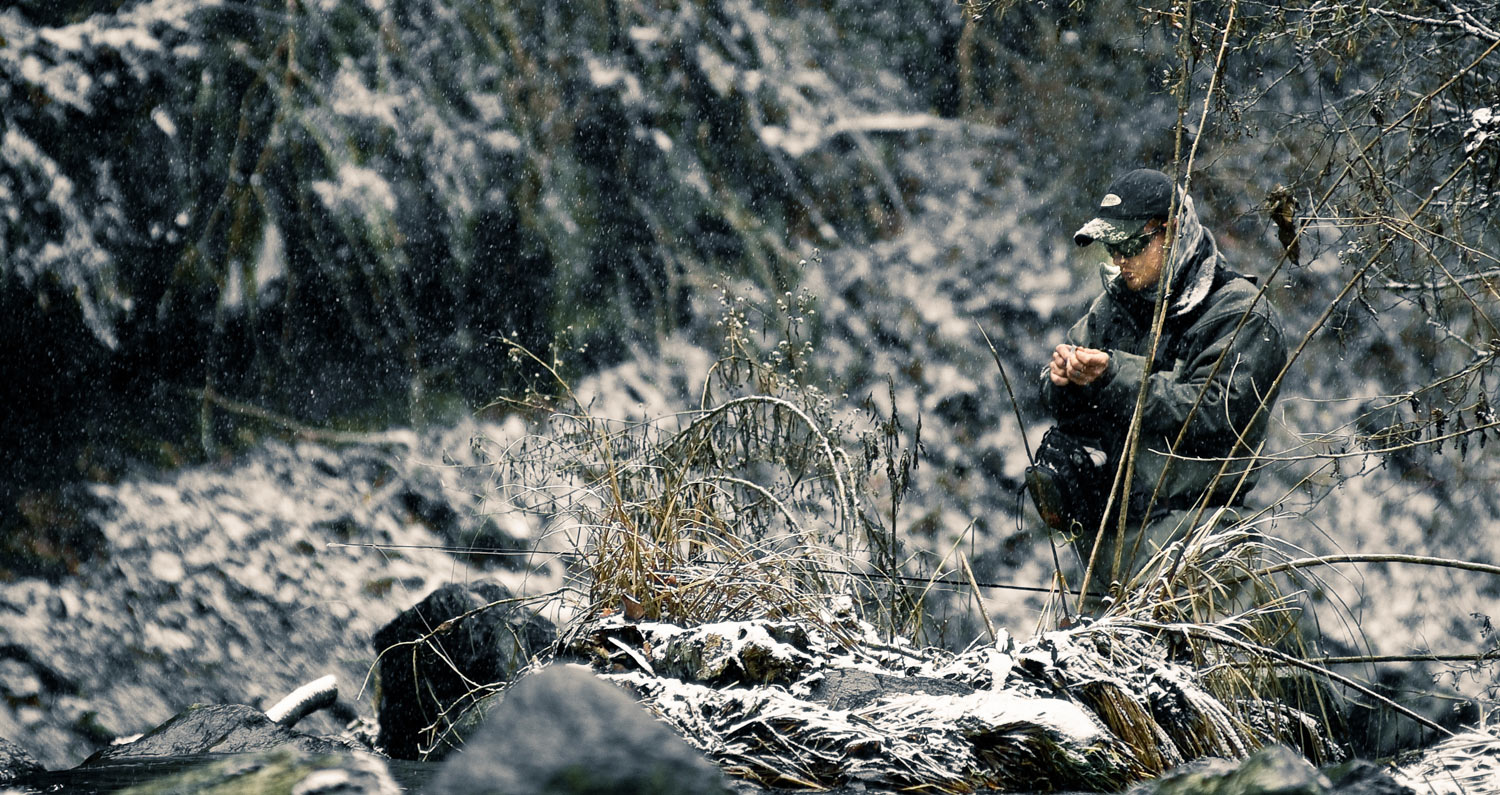
By Kyle Wilkinson
Being prepared for a day of winter fishing means more than having a box of the right flies.
I got an email earlier today from a customer who had just gotten back from the river. He had attempted to fish the South Platte however, after several hours of trying to cast between floating icebergs and slush, he decided to wave the white flag and head home. His question was to know how to predict these sort of conditions ahead of time- before making the hour plus drive to find an unfishable river.
The South Platte, like virtually every other tailwater around the country, is well known to be a year-round fishery. With that said, there are still a few other factors that need to be considered when planning a winter outing. Following these 5 steps are just as important as your fly selection if having a comfortable and successful day on the water during winter is your goal.
Nighttime Temperatures. Everyone loves to pay attention to the daytime temps you’re likely (or more like keeping the fingers crossed) to experience during your day of winter fishing. A sunny, 40 degree day during January can feel like a heat wave, particularly if you’re coming off a nasty cold stretch leading up to it. And while pleasant daytime temps are something no one will complain about, the nighttime temperatures in the days leading up to your trip are just as important to pay attention to. Given the fact that it’s winter, fishing a tailwater is always going to be your best bet. If you see nighttime temps are hovering around freezing, plan on seeing the majority of the river open. On the other hand, if your day on the water is immediately following a especially cold stretch- i.e. single digits (or lower) at night, followed by sub 32 degree days, then plan on the situation mentioned in the first paragraph to be what you encounter. Thankfully, given the wonderful nature of tailwaters, the remedy to avoid fishing in a “Slushy” is to just plan on fishing closer to the dam. The water should remain warm enough–particularly within the first mile below the outlets– to remain relatively ice free compared to the lower stretches.
Layer Properly. I know this seems like common sense, but it’s something I see a lot of people do wrong.
Read More »The cutthroat and the sweet sixteen
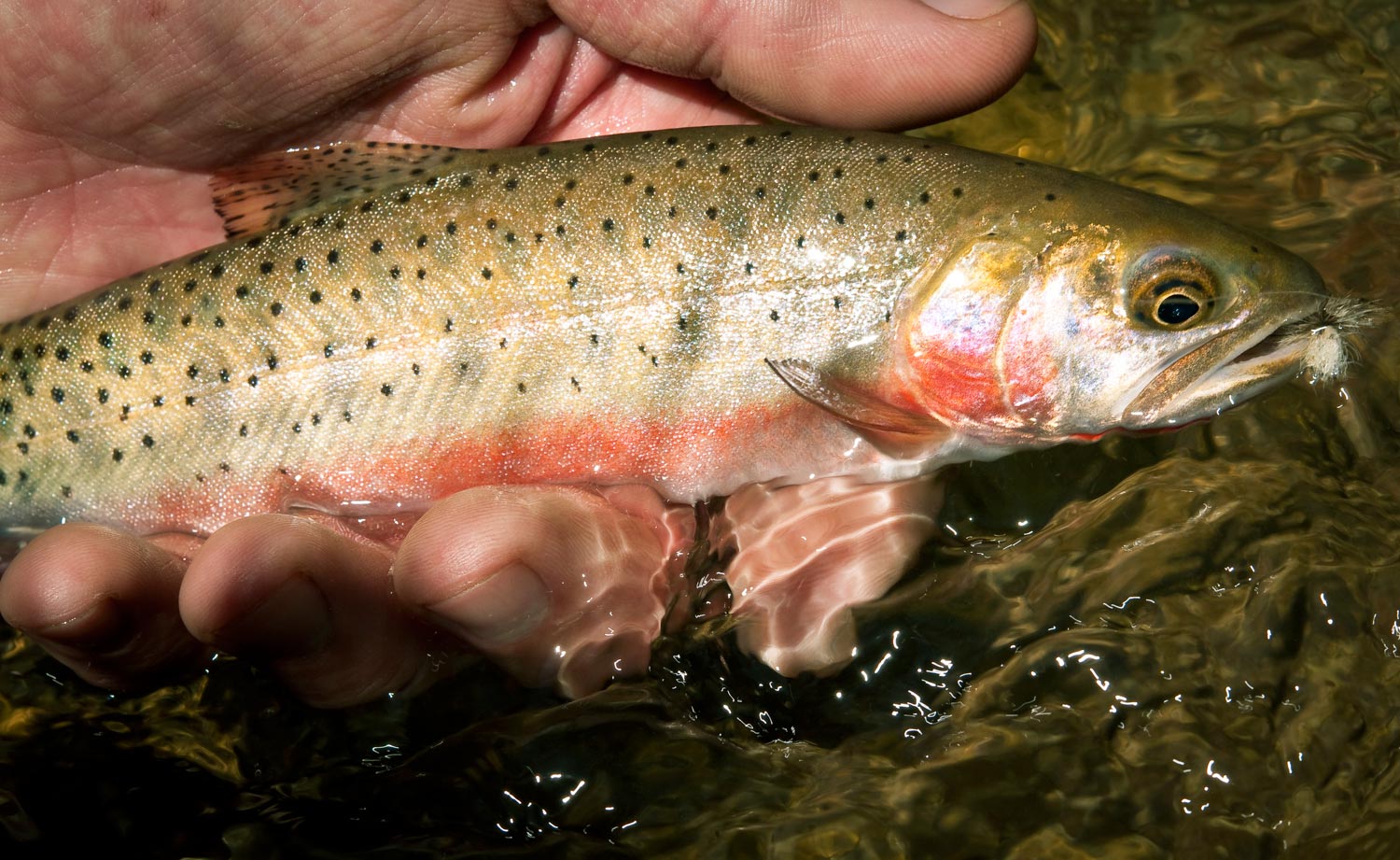
“HE IS OUR LEGACY. HE WAS LEFT HERE FOR US BY A LOVING FATHER, IF YOU BELIEVE IN THAT SORT OF THING, AND ONCE HE IS GONE WE WILL NEVER BE ABLE TO REPLACE HIM.”
My friend Gary Lacey did me a disservice while shooting clays one day. I fell one shell short for the round and he handed me his beautiful Beretta SO3 EELL to finish the round. I wish I had never touched that gun.
What a beautiful sensation it was when that elegant little side lock fell into place against my shoulder and the bright orange disk disappeared in a puff of black powder. How could I not covet this gun that I would never be able to afford? As pleasant to look at as to shoot the Beretta, with its lavish engraving and gold inlayed pheasant and duck, was a far cry from my clunky old Browning automatic.
Square jawed and utilitarian, it’s a poor gun for the job. The Browning A-5 Sweet Sixteen was never made for shooting clays, not that it matters, I’m not very good at it. Still, I enjoy shooting my Sweet Sixteen. Of all the guns I own, it is the most dear to me.
The gun belonged to my maternal Grandfather. He wasn’t, I suppose, what you would call a sportsman. He fished and hunted but when he did it was for food, not for sport. He taught me to shoot squirrels and catch sunfish. He taught me to
Read More »Fear And Loathing On The Water
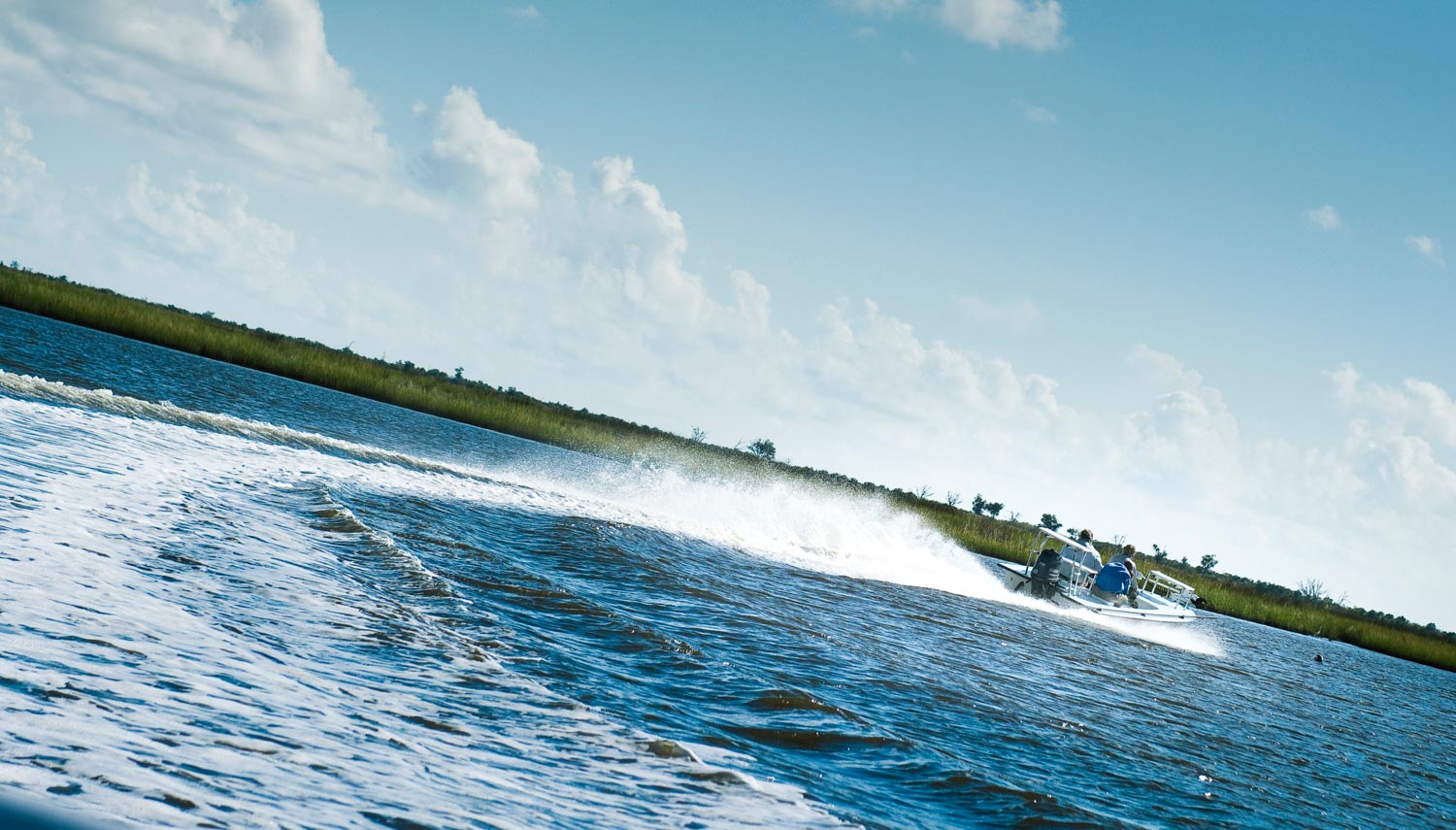
WHEN THINGS GO BADLY, YOU’VE GOT TO STAY POSITIVE AND TURN YOUR TRIP AROUND.
The sky is clear. Mangrove leaves glow in early morning sun. Dirty brown water floods the mud flats of Delacroix, Louisiana. I take in the view from the poling platform while struggling to move the boat against a twenty MPH wind. The last few days have been challenging, to say the least. We’ve battled the thunderstorms and wind, poor light and water clarity, and today the water temperature has dropped ten degrees. We were chased out of Venice when the Mississippi rose nine feet and landed here, where at least we know a couple of spots. The whole trip has been a mess and I’ve spent most of it on the platform. On the morning of this, the third day, I have only landed one redfish and I’m looking to turn things around.
I pole the boat into a sweet looking spot where the lee of a small island meets the mouth of a creek. It looks too good to not hold fish. My buddies Scott and Daren have given up on their fly rods and gone over to the dark side, throwing spoons and jigs on gear rods. Daren fires a cast into the creek and Scott casts to the island. Both lines come tight and we have a legitimate double in the first thirty minutes of fishing. My shoulders relax and I think that today things just might turn around. I spin the push pole in my hands and sink the point into the soft bottom to hold the boat while my friends land their fish. That’s when I hear a loud snap and the pole is suddenly free in my hand.
There’s no managing a flats boat in strong wind with a broken push pole. We spend most of day three riding back to the dock, driving a half hour to the nearest hardware store and fixing the pole. By afternoon, when we return to the flats, things have changed and there isn’t a redfish to be found. I blind cast wildly to fishy looking water while a pounding rises in my ears. My frustration becomes palpable and my casting sloppy. We call the day around 3:30 when the boats wiring starts acting up. I ride back to the dock in a state of self loathing. Voices of negativity singing choruses in my head. Feeling sorry for myself like a little bitch.
Just a week earlier I was swinging flies for steelhead on the Deschutes river in Oregon. Conditions were tough there too. I’d taken my friend Andy Bowen for his first west coast steelhead trip, to learn how to cast a two hander and swing flies from Jeff Hickman, who taught me. Andy was on the board early with two nice fish. His first, a wild buck, handed him his ass early in the fight, almost spooling him. The look on Andy’s face was priceless. He kept his cool and, with constant coaching from Jeff, landed the fish.
It was a perfect first steelhead experience. I always choose my words carefully when
Read More »DIY Bonefishing – It’s All About The Short Game
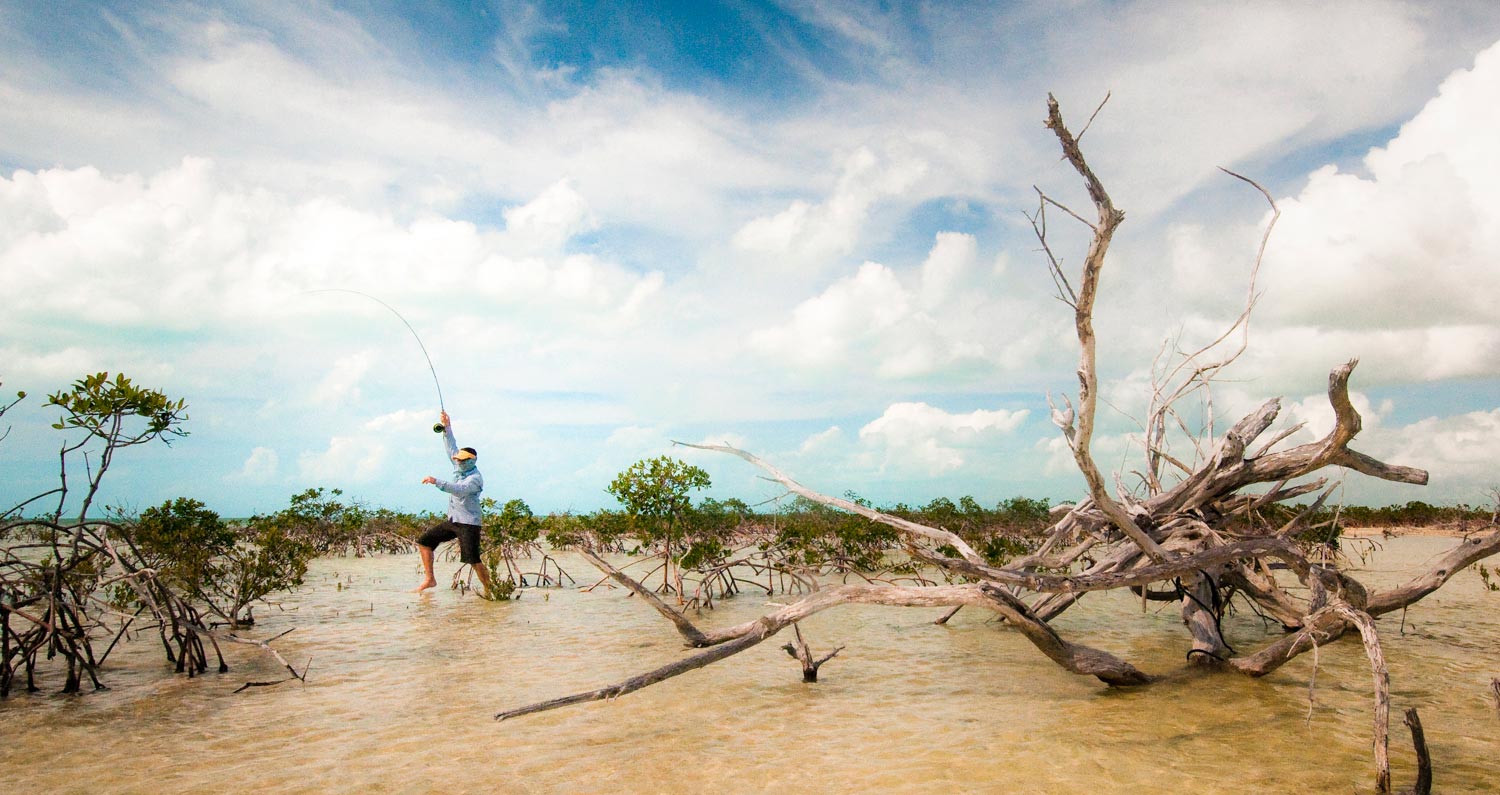
By Rod Hamilton
“I HAVE SEEN MORE THAN ONE FFF CERTIFIED CASTING INSTRUCTOR BROUGHT TO TEARS AFTER HIS TENTH BLOWN SHOT AT UNDER FORTY FEET”
Whether you are wading in eighteen inches of water, weaving through the mangroves or doing the Flamingo Slide over a mucky flat, there is no such thing as a seventy-foot cast. For DIY fisherman, it’s all about the Short Game.
Leave your driver, fairway woods and long irons in the bag. DIY success is about accuracy with your wedges and putter. It calls for short precise shots, minimal false casting and one chance to make a pinpoint presentation. There are no Gimmies at thirty feet.
I have had the good fortune to fish with some great anglers and casters this year. I’m still awestruck by the elegance of them laying out an eighty-foot line. But I’ve come to realize that the skills required to be successful from the front of a skiff don’t necessarily translate to being successful in the “hand to hand” combat experienced by the DIY guy.
I’m talking about soft presentations at 20 – 40 feet in 25 m.p.h. winds with one false cast. Then dropping the fly not in a Hula Hoop, but on a Frisbee.
Let me tell you I have seen more than one FFF Certified Casting Instructor brought to tears after his tenth blown shot at under forty feet. It’s the difference between being a great driver of a golf ball and a great putter, both are wonderful skills to posses, but different.
Setting the stage for a DIY day; you just got out of your car or off your bicycle. The fish you will be encountering have seen a “Charlie” before; in fact they probably bolted from one yesterday. And the direction you walk has more to do with “where can I go” then the sun, wind and tide.
And, 90% of your casts will be forty feet or less.
SKILLS REQUIRED FOR THE SHORT GAME:
Read More »Keeping The Energy In Your Fly Cast: 2 Common Mistakes
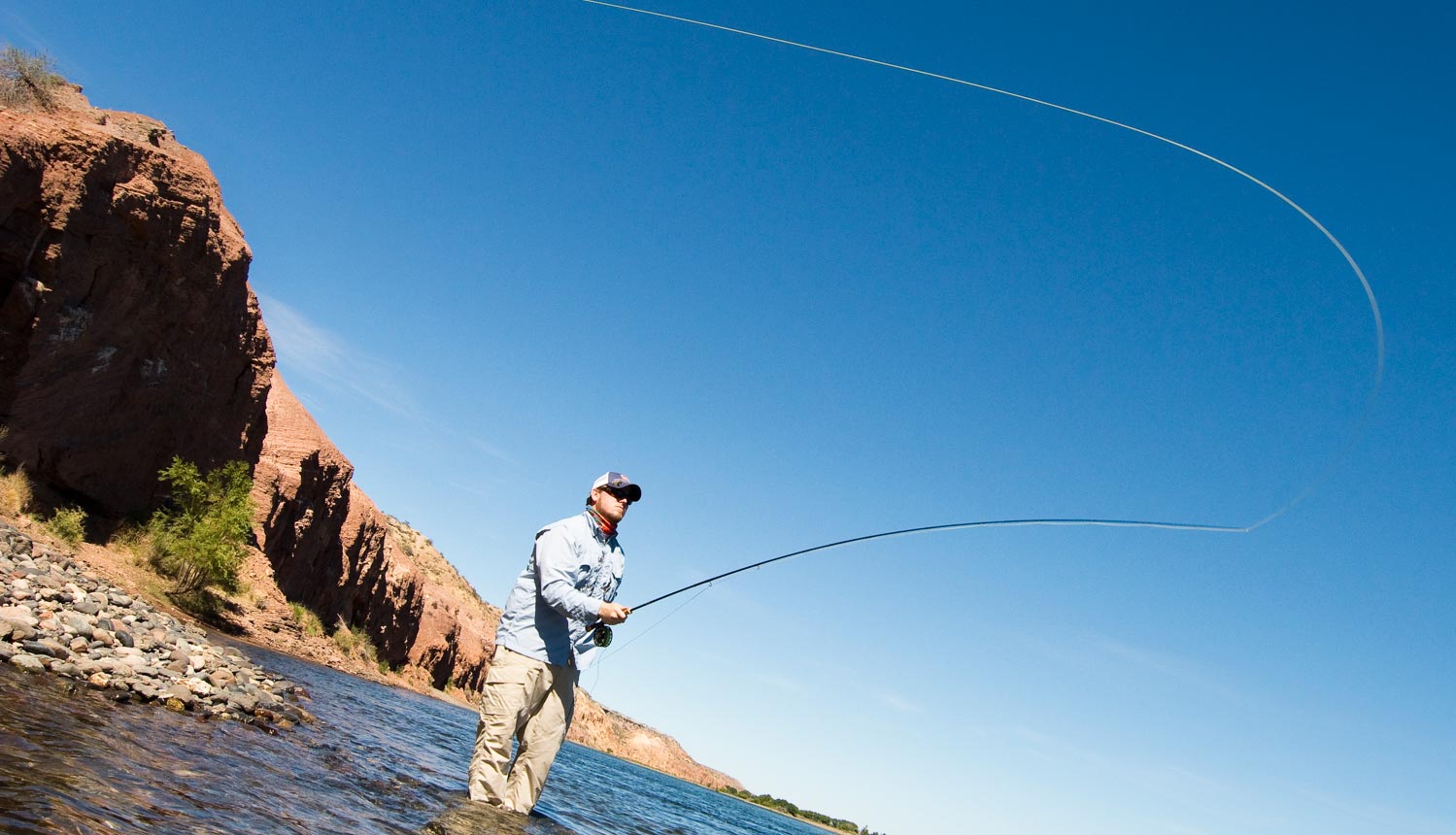
By Louis Cahill
An energized fly line is crucial for a good cast and a good presentation.
The act of casting a fly line is really just a matter of transferring energy. We often use the word throw, as in, “Throwing big streamers,” but that isn’t an accurate description of what we’re doing. Hopefully not anyway. Fly lines don’t careen through the air like a golfball. They unroll in tight graceful loops. Right?
It’s the difference in particle motion and wave motion. We can hit a golfball pretty accurately but once that ball leaves the club we are out of the equation. We no longer influence it’s travel to the target. That’s more like casting a spinning rod. A fly cast is more like a jump rope. The rope continues its orbit as long are we hold tight and put energy into it. If we let go of the rope, it falls to the ground.
We talk about slack in fly casting a good bit. When we introduce slack into the line during the cast, it behaves much like that jump rope. There are several bad habits many fly casters share, which create slack and drain the energy from their casts but in this article I’m going to focus on two which are very common and devastating to a good cast.
Before I get into specifics I will give you this tip. As you cast, you should feel a steady tension on the line with your line hand. Hold the line between your thumb and forefinger and make some false casts. The line should stay straight and taut between your line hand and the stripper guide and the pressure should be pretty constant. This is true whether or not you use a double haul. If your line is slapping around and jerking at your line hand, you need to work on your timing.
The two parts of the cast I want to talk about are the ever-important stops in both your forward and back cast. Whether casting forward or back, the stop is what creates the loop. The thing many anglers don’t realize is
Read More »